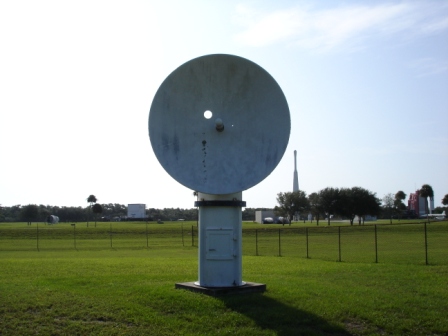
Overview
Display location:
Type: Guidance antenna
Agency: U.S. Space Force, NASA
History
The Mod II Radar was a modification of the SCR-584 radar, an automatic tracking radar that works in the 2,700 to 2,900 MHz frequency range to determine a target’s range, azimuth angle and elevation angle. The SCR-584 was the first successful operational tracking radar at microwave frequencies. It was developed by the Massachusetts Institute of Technology (MIT) Radiation Laboratory and became available in operational quantities during the latter half of World War II. Its function was to provide the fire-control information necessary for operating a battery of four 90-mm antiaircraft guns. The SCR-584 was the first to use the conical-scan tracking technique.
How It Worked
The system works in both echo and beacon track modes. In the echo mode, the Mod II radar signal is reflected from a target. In the beacon mode, the radar receives and processes signals beamed to it from the target. Installed in 1954, Mod II was one of the first radar tracking systems located on the Cape.
The Mod II radar can provide unambiguous line-of-sight tracking of beacon-equipped targets to distances of up to 400 miles and on skin track (echo) mode up to 40 miles on a target measuring one square meter. The radar dish is parabolic, and measures ten feet in diameter.
This was the first radar system to be designed specifically for use on the missile range at Cape Canaveral. Mod II radar provided crucial tracking support for a number of missions to include the manned Mercury and Gemini missions.
This Mod II radar dish at the museum was housed atop the Range Control Center (RCC) on the Cape for over 40 years until its retirement in 1995. The dish was moved to the Museum for display purposes in 1996.
More Support Hardware